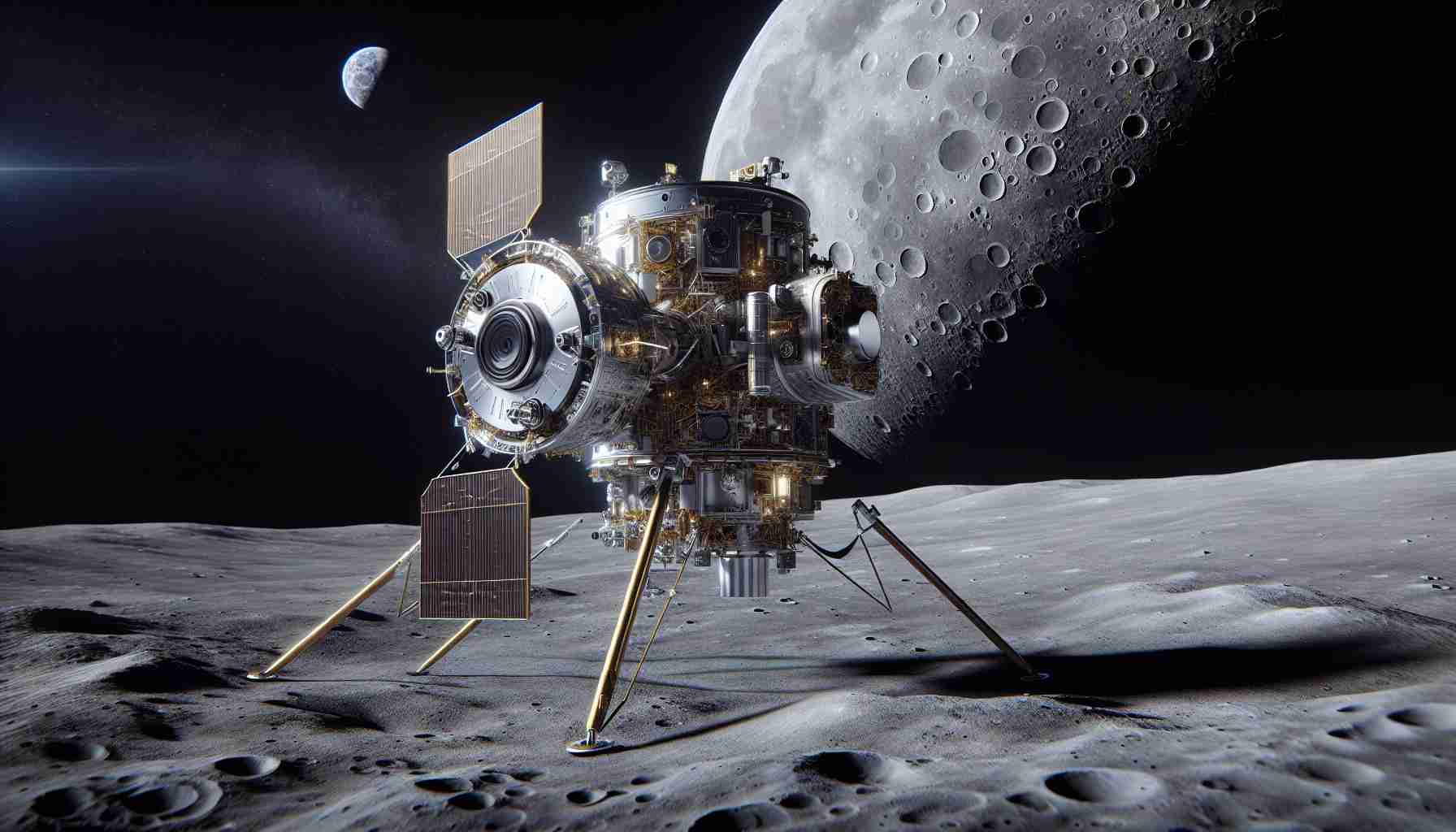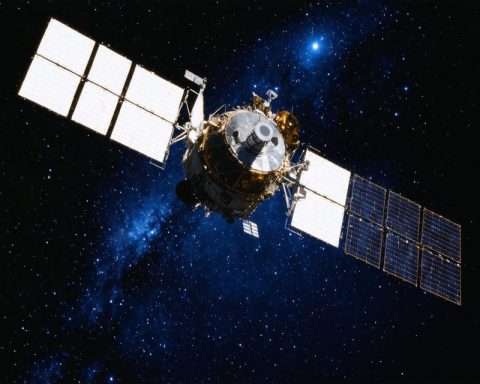The Dawn of Private Lunar Missions
Recent developments in space exploration reveal an exciting shift as private companies launch two commercial probes aimed at the Moon. This advancement could redefine lunar exploration, demonstrating how the private sector is revolutionizing the field with innovative technologies and collaborative efforts.
The launch took place early on a Wednesday morning at Cape Canaveral, facilitated by a SpaceX Falcon 9 rocket. This launch successfully propelled two distinct probes, highlighting international collaboration: the American Blue Ghost from Firefly Aerospace and Japan’s Hakuto-R Resilience from ispace.
The Blue Ghost is a part of NASA’s Commercial Lunar Payload Services initiative, designed to leverage commercial partners for lunar exploration. This probe can carry a significant load, including ten NASA instruments that will analyze the Moon’s surface. It is scheduled to land by March 2 near Mount Latreille in the Mare Crisium region, embarking on a 14-day mission.
Hakuto-R Resilience, after a prior unsuccessful attempt, is preparing for a promising landing between May and June at the Mare Frigoris. Accompanying it is a small rover named Tenacious, which will collect regolith samples, marking a key step in lunar resource exploration.
These missions symbolize the growing involvement of private entities in space exploration, fostering international partnerships while advancing scientific understanding of the Moon. As these ventures progress, they signify humanity’s enduring pursuit of knowledge beyond Earth.
Revolutionizing Space Exploration: The Broader Impact
The advent of private lunar missions marks a significant turning point for global space exploration, with implications that extend beyond mere technological advancements. These initiatives underscore a transformative shift in how space exploration is perceived and conducted, often merging corporate innovation with governmental support. As companies like Firefly Aerospace and ispace take the spotlight, we are witnessing a more robust collaboration between the public and private sectors, potentially reshaping how nations regard scientific exploration and technological progression.
Economically, the rise of private space enterprises is expected to revolutionize the global economy by creating jobs, stimulating new industries, and attracting investments in sectors related to aerospace and beyond. The cumulative effect of sustained lunar missions could pave the way for resource extraction opportunities, including helium-3, a potential fuel for future fusion reactors, and other elements that could fuel energy security innovations on Earth.
Moreover, the environmental implications cannot be overlooked. The increased frequency of launches raises questions about the long-term impact on our atmosphere and orbital debris. Future trends indicate a higher demand for sustainable practices in space tourism and exploration, urging companies to adopt greener technologies to mitigate these environmental issues.
In summary, as more entities venture into lunar landscapes, the long-term significance of these missions may redefine not only our relationship with space but also our societal values regarding exploration, collaboration, and ecological responsibility. The implications of this shift will be felt for generations, making space not just a new frontier, but a new avenue for global progress.
Private Lunar Missions: A New Era in Space Exploration Unfolds
The Dawn of Private Lunar Missions
Recent developments in space exploration have marked a pivotal shift, showcasing private companies as key players in lunar exploration. With the successful launch of two commercial probes aimed at the Moon, the landscape of space exploration is being redefined. This evolution highlights how innovative technologies and collaborations are transforming our understanding of lunar resources and the broader cosmos.
Launch Details and Missions Overview
On a significant Wednesday morning at Cape Canaveral, a SpaceX Falcon 9 rocket successfully launched two distinct lunar probes: the Blue Ghost from Firefly Aerospace and Japan’s Hakuto-R Resilience from ispace. This launch exemplifies a successful partnership between private companies and international entities, marking a notable moment in the commercialization of space.
Blue Ghost
The Blue Ghost probe, which is part of NASA’s Commercial Lunar Payload Services (CLPS) initiative, is designed to harness the strengths of commercial partners in lunar exploration. Spanning significant capabilities, this probe can carry ten NASA scientific instruments destined to analyze the Moon’s surface. It is slated to land by March 2 near Mount Latreille in the Mare Crisium region, initiating a 14-day mission focused on lunar surface analysis.
Hakuto-R Resilience
Following a prior unsuccessful attempt, Hakuto-R Resilience has its sights on a successful landing between May and June at Mare Frigoris. This mission is particularly noteworthy as it includes the Tenacious rover, equipped to collect regolith samples. This key undertaking represents a substantial leap forward in understanding the Moon’s resources and potential for future exploration.
Noteworthy Features and Innovations
Both missions highlight various innovative features and technological advancements crucial for achieving lunar exploration goals:
– Robust Scientific Instruments: The payload includes advanced scientific tools that will provide invaluable data about the composition and geology of the lunar surface.
– Long-duration Missions: Both probes are designed for extensive operations, thus expanding the operational understanding of lunar environments over time.
– Regolith Sample Collection: The inclusion of sampling techniques will pave the way for future in-depth studies of lunar materials, which could have implications for in-situ resource utilization.
Pros and Cons of Private Lunar Missions
Pros:
– Increased Funding Opportunities: Private investments may lead to enhanced budgets and resources for scientific missions.
– Speed and Flexibility: Private entities can often react and adapt more quickly to new challenges and technological opportunities.
– International Collaboration: These missions foster global partnerships, facilitating knowledge sharing and innovation.
Cons:
– Commercial Interests vs. Scientific Goals: The potential for profit-driven motives may conflict with pure scientific inquiry.
– Regulatory Challenges: The commercialization of space may require new regulations to ensure sustainable practices and ethical explorations.
Market Trends and Future Predictions
The ascent of private companies in space exploration indicates a promising trend towards increased participation from various sectors. As technology continues to evolve, we can expect:
– Growth in Lunar Infrastructure: Probes like Blue Ghost and Hakuto-R will lay the groundwork for future lunar bases and resource extraction projects.
– Enhanced International Partnerships: More countries and organizations will likely join together for collaborative missions as the lucrative nature of space exploration becomes evident.
– Sustainable Practices in Space: Lessons learned from these missions may drive sustainable operational methods to minimize environmental impacts on the Moon.
Conclusion
The launch of the Blue Ghost and Hakuto-R Resilience represents a bold step forward in the landscape of space exploration. As private entities take center stage, the implications for scientific research and international collaboration are vast. The advancements made through these missions could pave the way for a sustainable human presence on the Moon and beyond.
For further insights into the future of space exploration, visit NASA and explore their latest updates and initiatives.


















